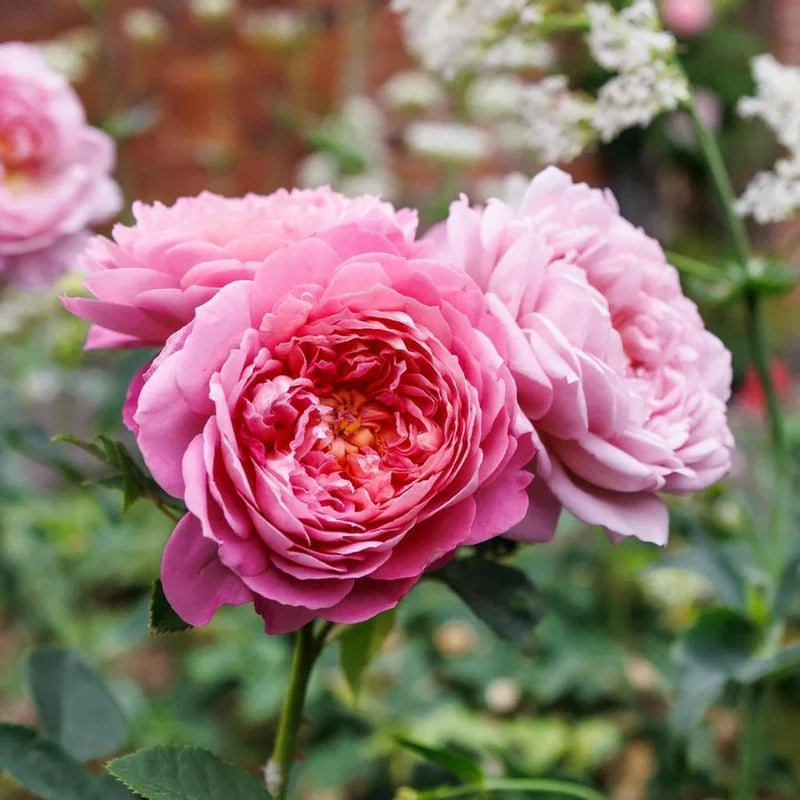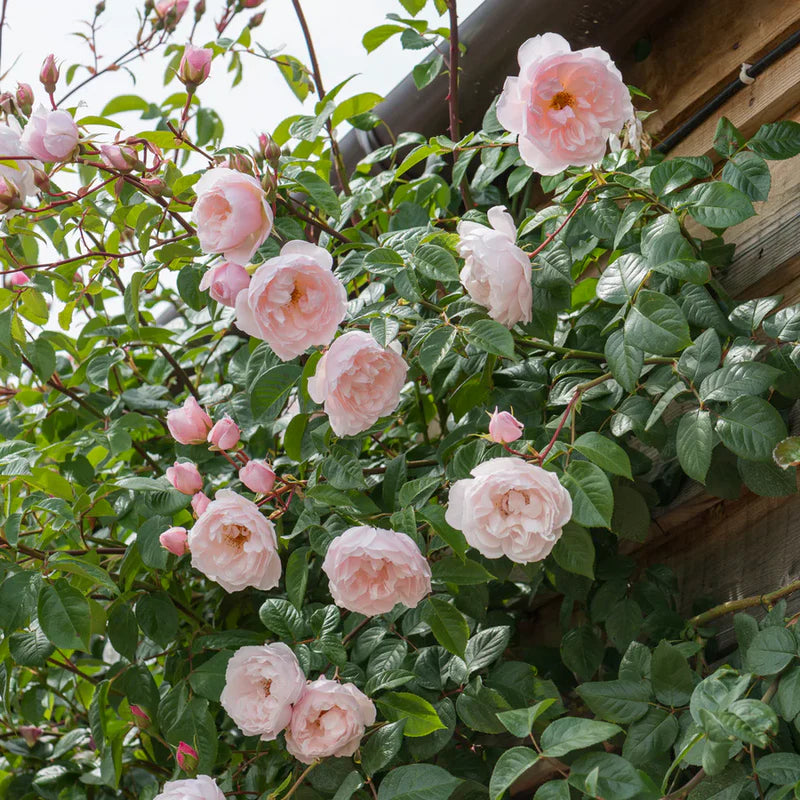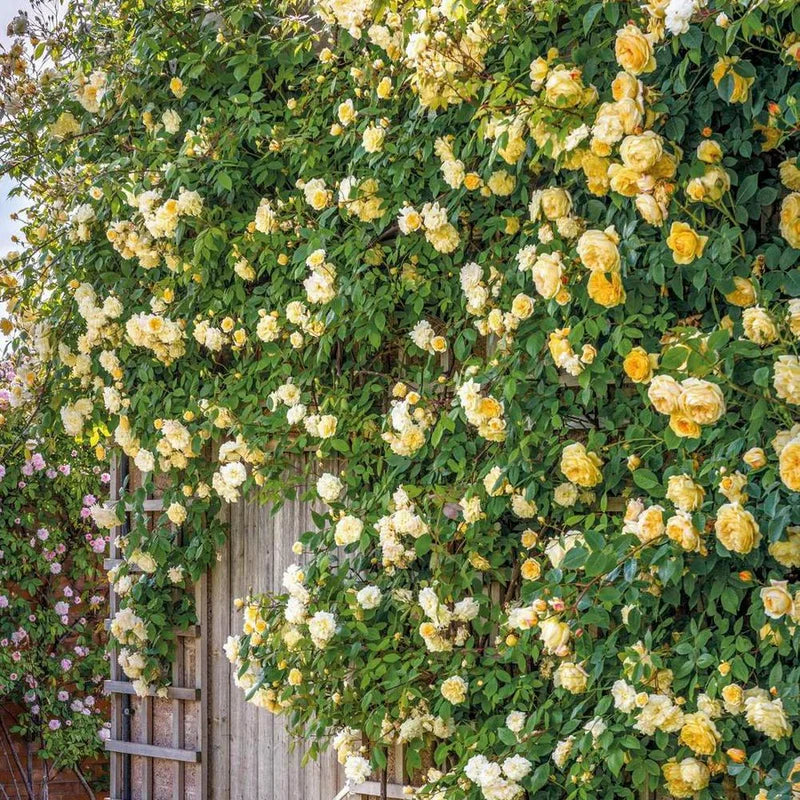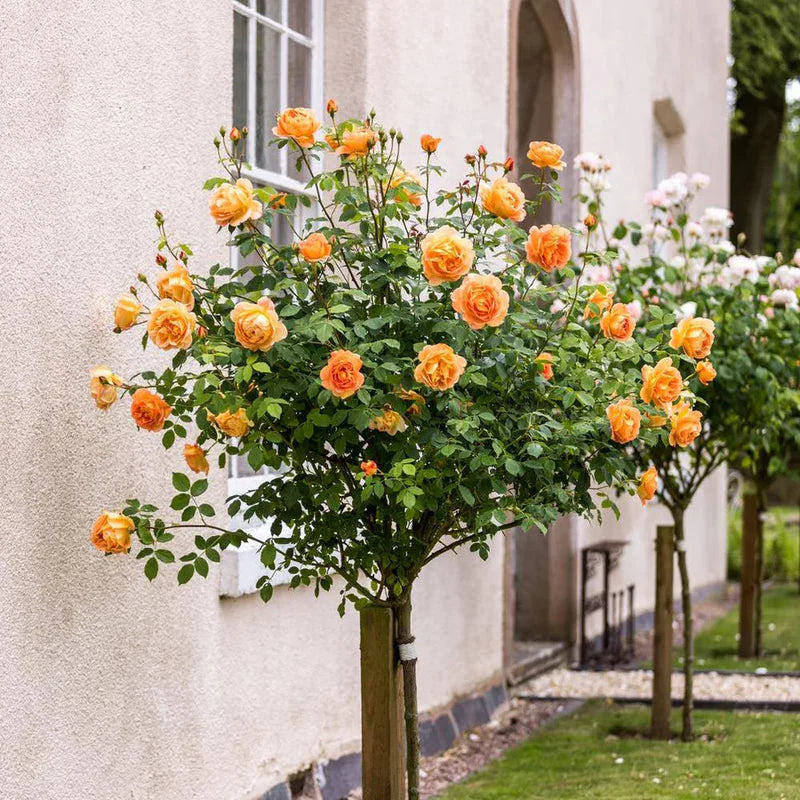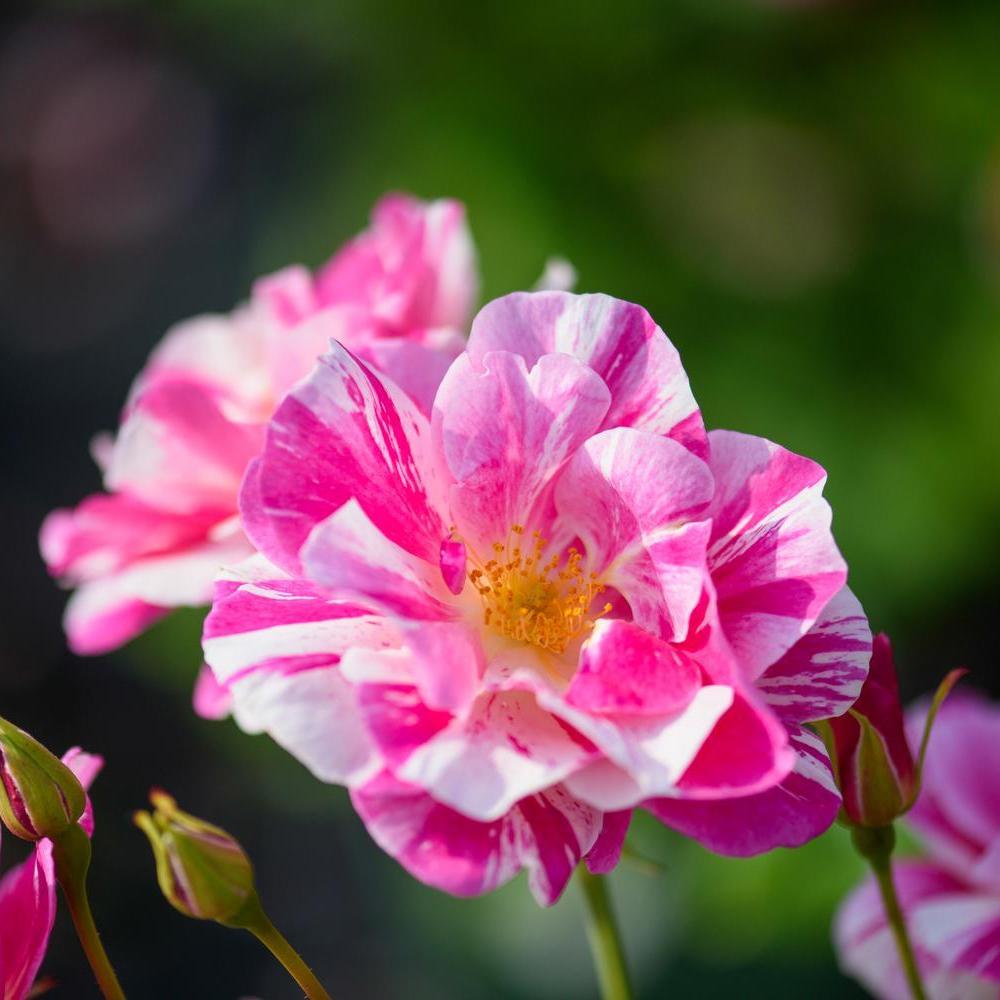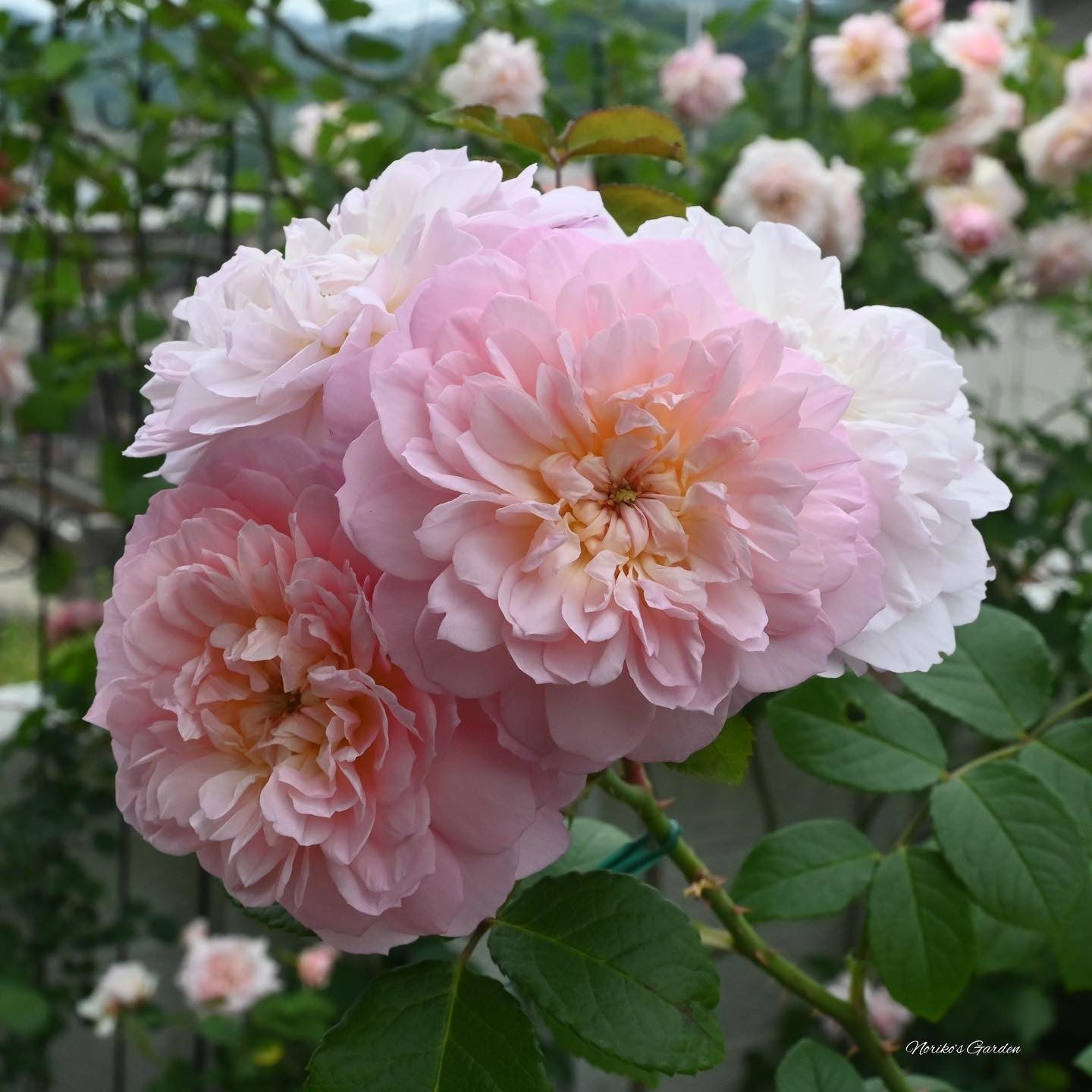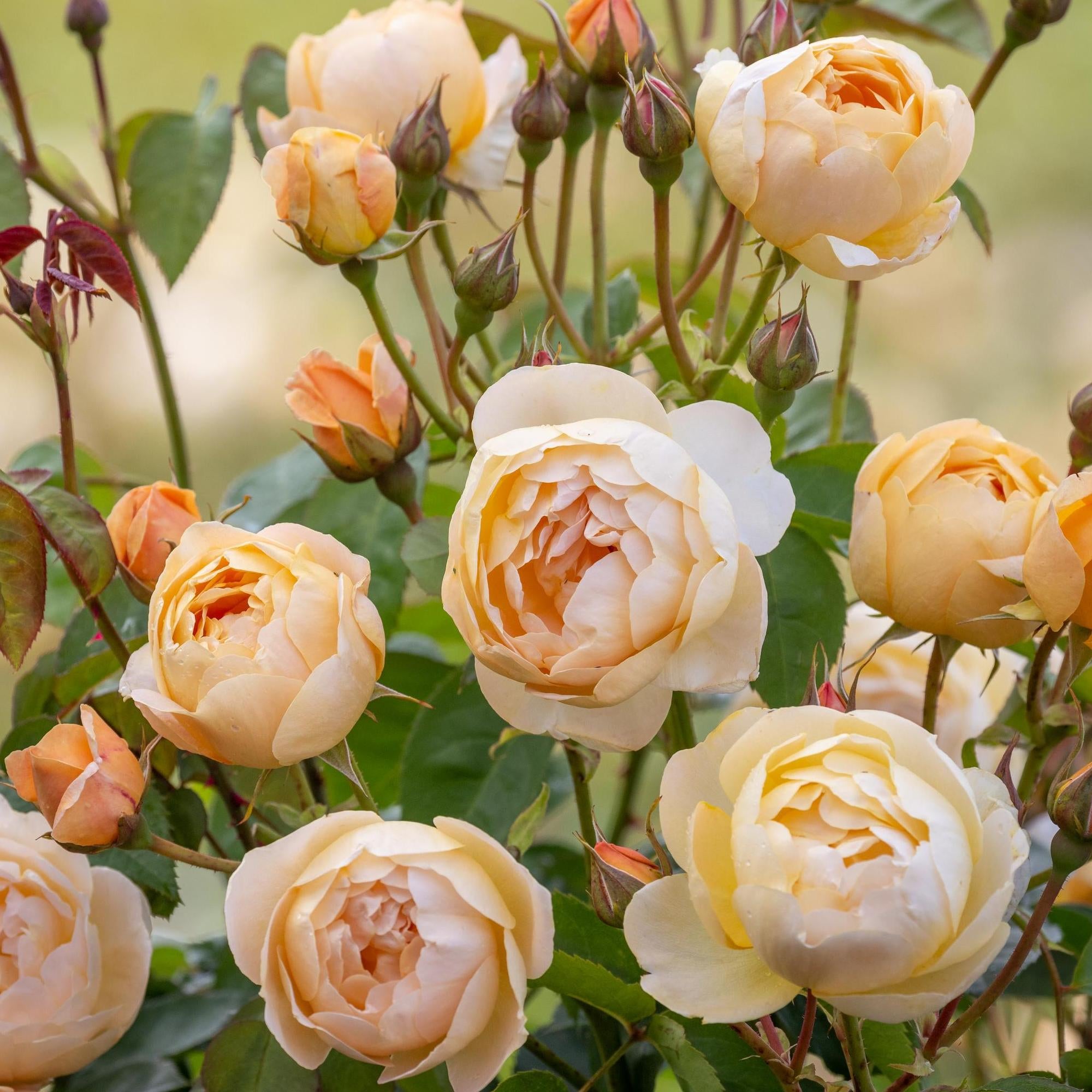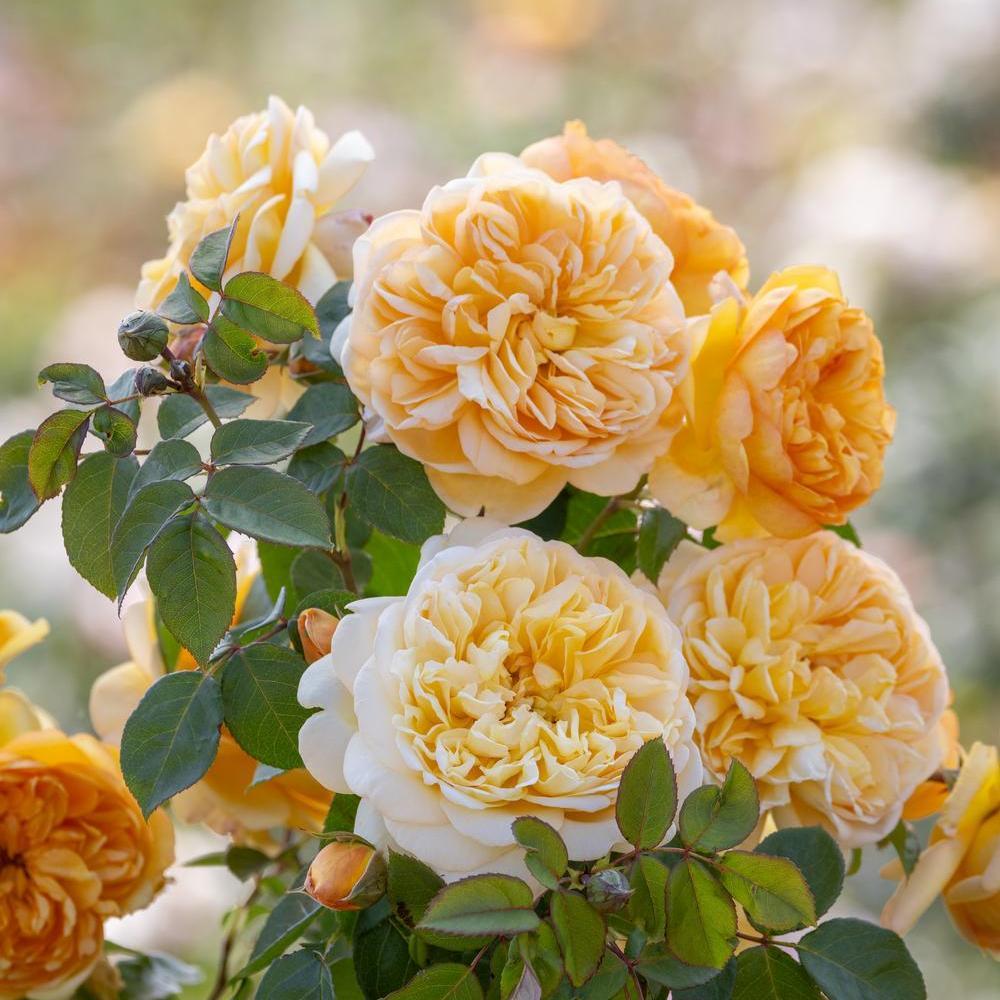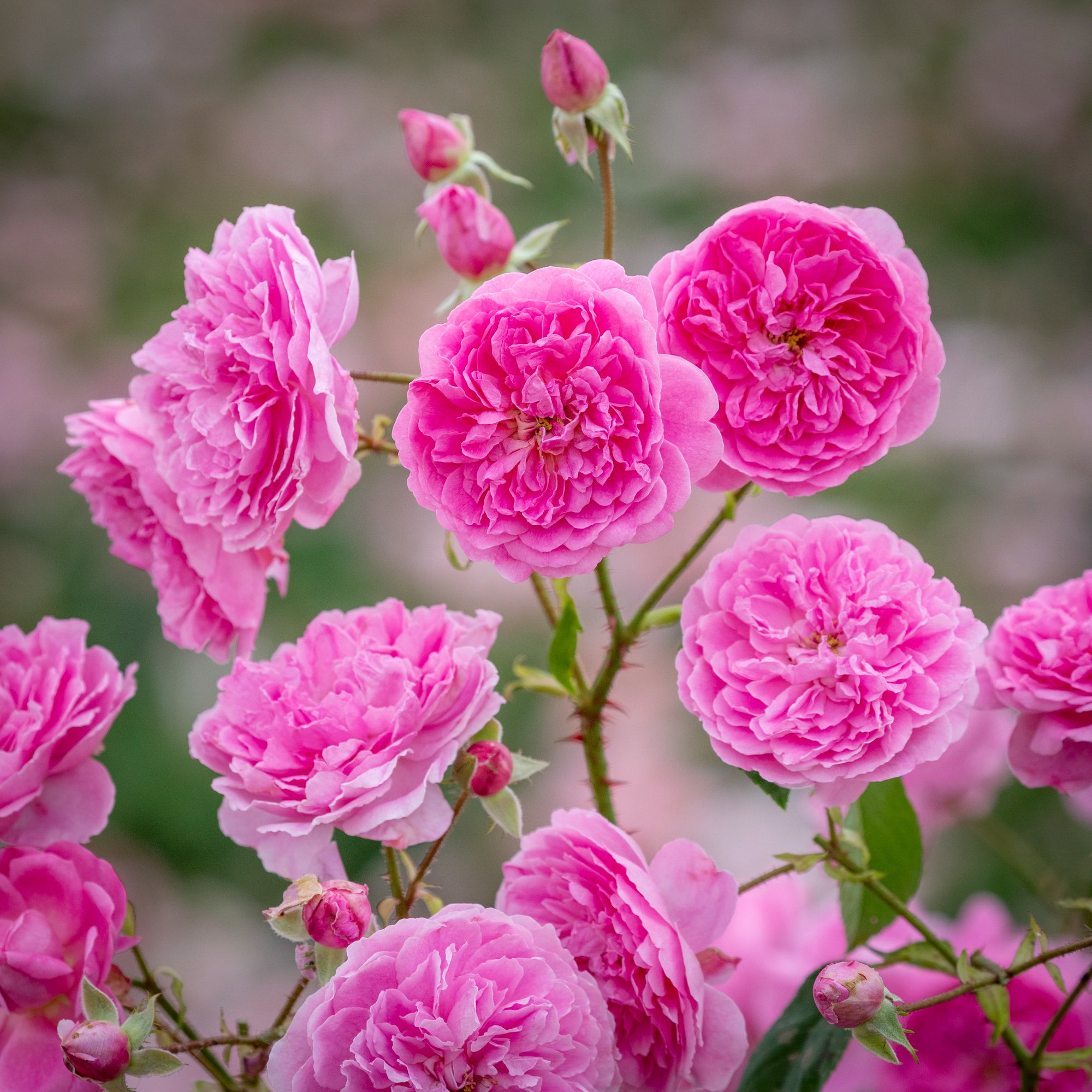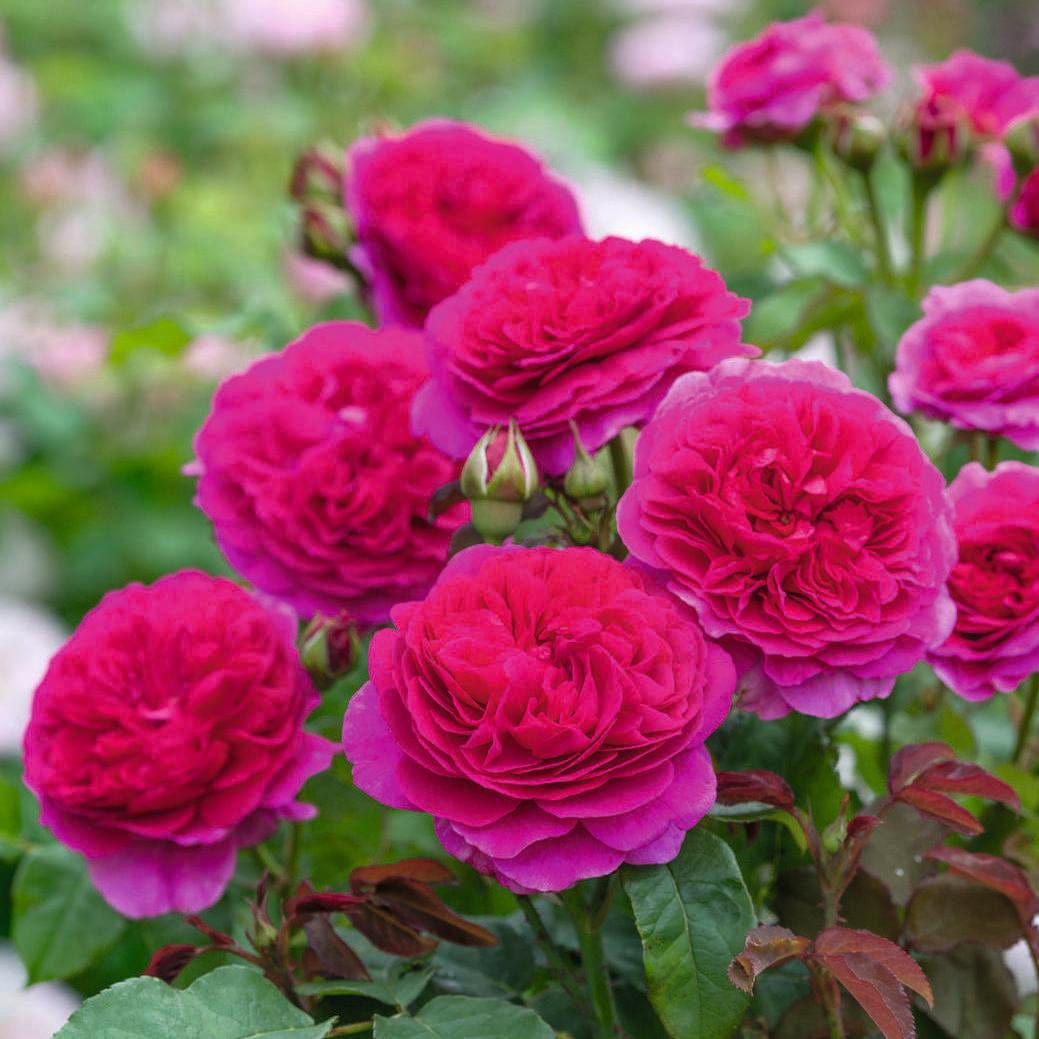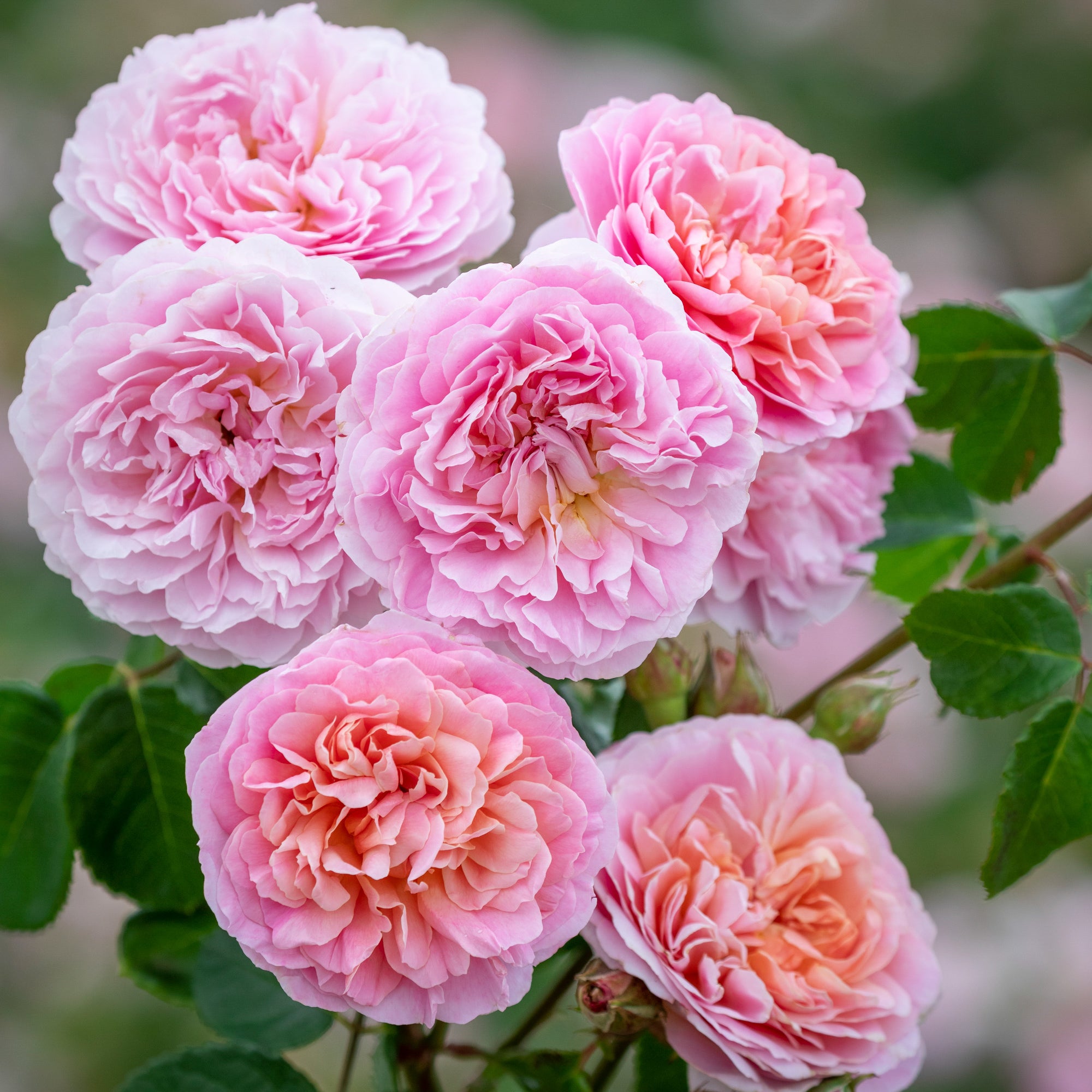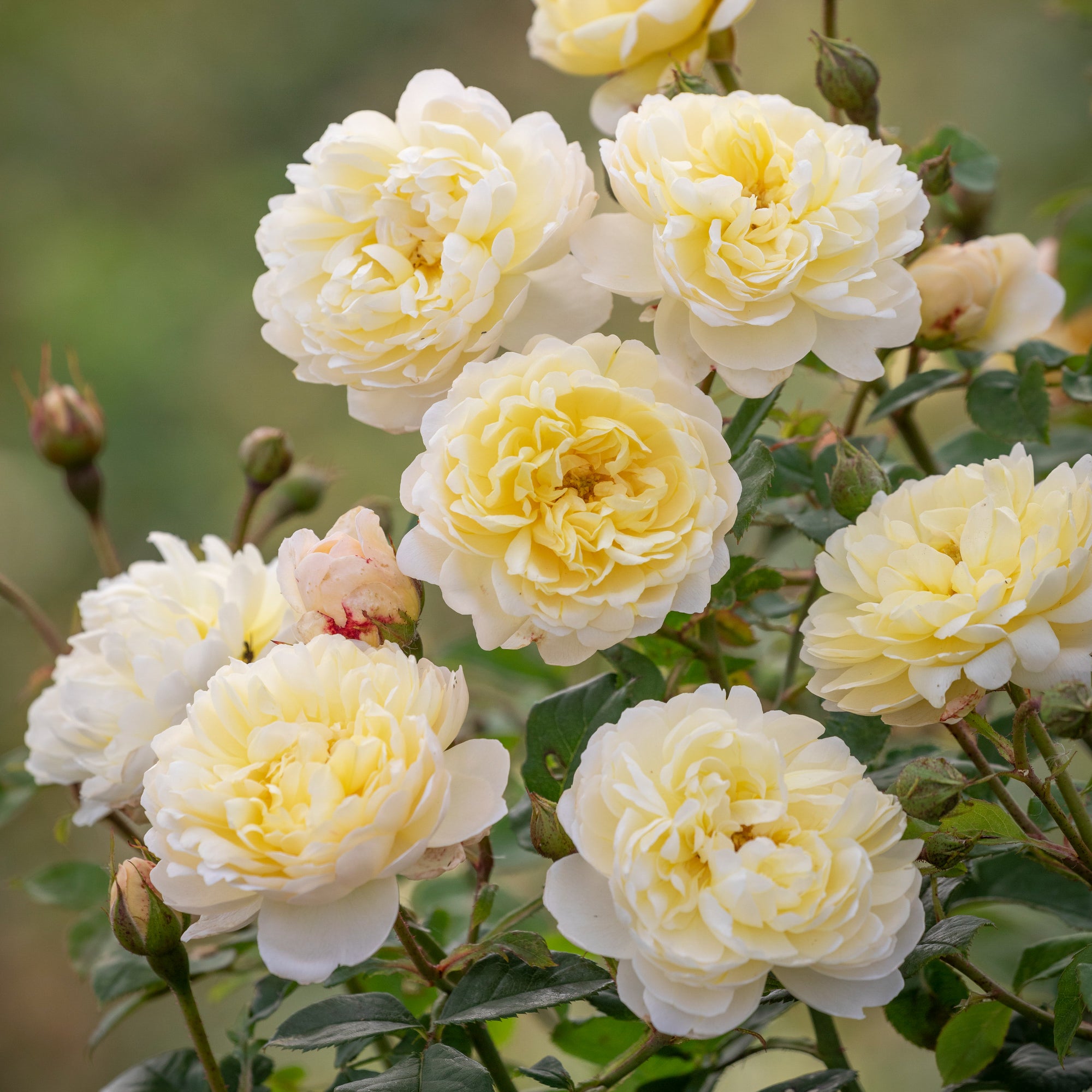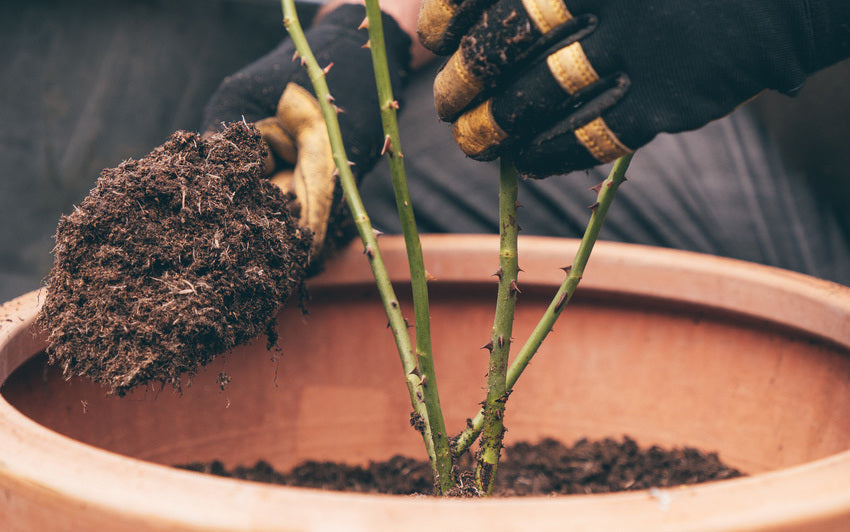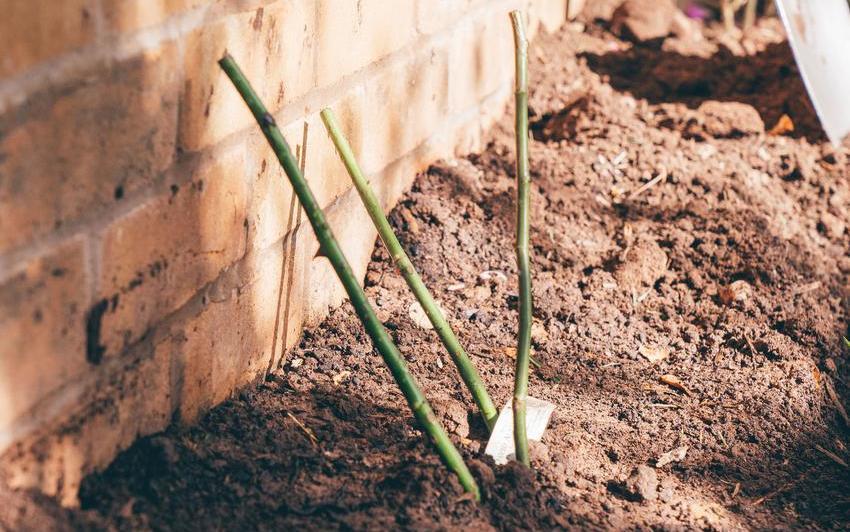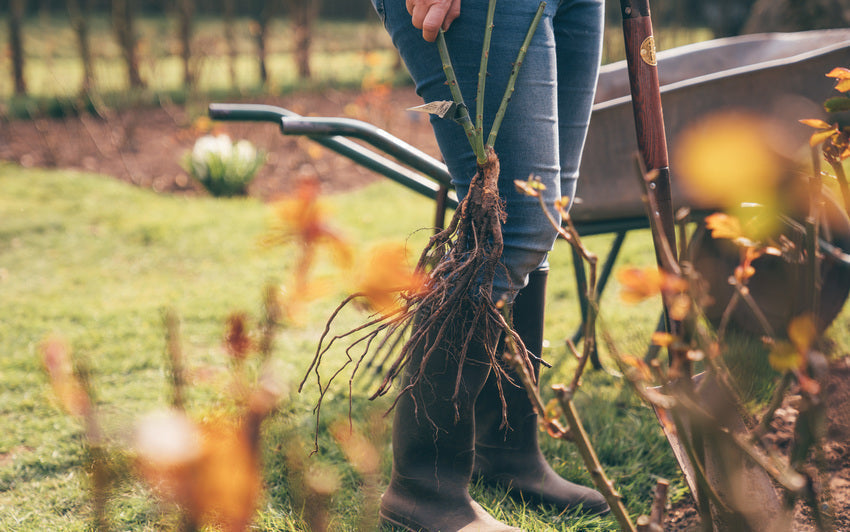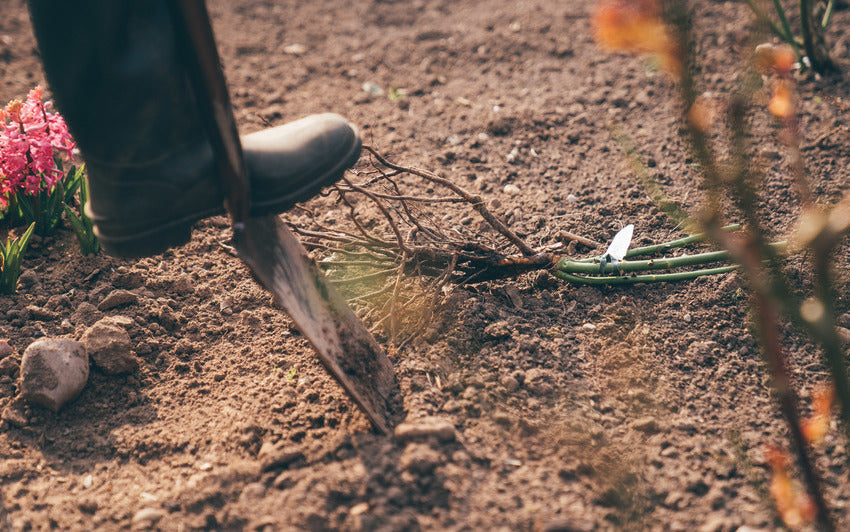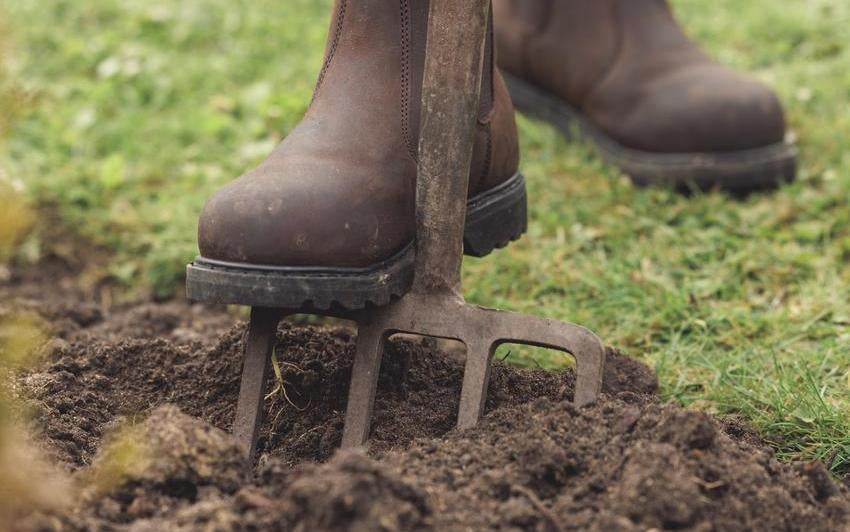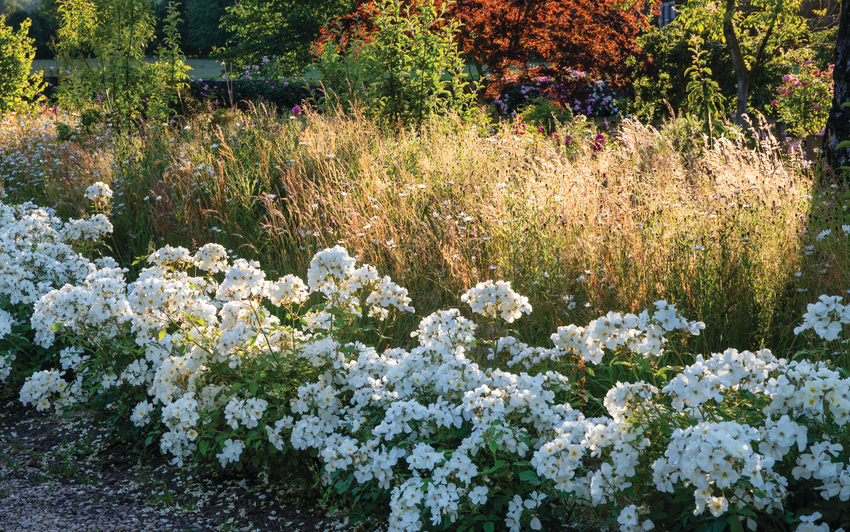Planting Bare Root Roses: Step-by-Step for Garden and Pots
Bare root roses arrive simply, as stems and roots, quietly waiting for the garden to bring them to life. With care, they can transform into lush, flowering plants, filling a garden with colour, fragrance, and presence. Affordable, easy to handle, and a traditional favourite among gardeners, they offer both charm and reward.
The ideal moment is during dormancy, from late autumn to early spring. At this time, the roots can settle into the soil before the rush of spring growth begins, giving your rose the strongest start.
Your Chosen Rose
Gloves & Gardenwear
Garden Tools & Accessories
Soil Improver or Well Rotted Manure
- We recommend Carr’s Special Organic Soil Improver
Watering Can
- We recommend Haws
Additional
- David Austin Mycorrhizal Fungi
- Large bucket of water
Roses thrive in sunlight. Select a location that enjoys at least four hours of direct sun each day. A little shelter from strong winds helps young plants establish, and once settled, roses are hardy and resilient.
Before planting, soak the roots in water for a couple of hours to rehydrate them. If planting will be delayed, keep the roses in their packaging in a cool, dry place, protected from frost, for up to three weeks.
Planting in the Ground
Planting directly in the garden allows bare root roses to grow naturally and thrive for years.
For more detailed guidance on planting bare root roses in the ground, see:
Planting in Pots
Pots are ideal for terraces, patios, or when you want roses close at hand.
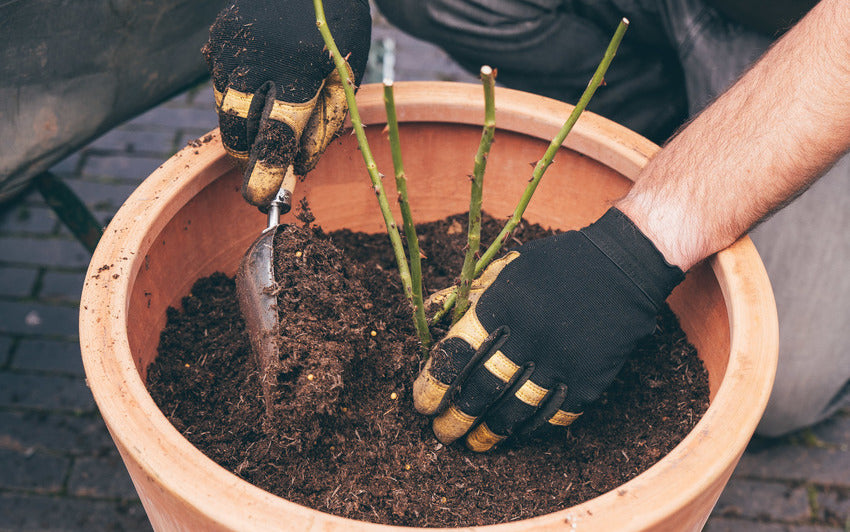 For Shrub Roses:Choose a pot at least 18 x 18 inches, 45 x 45 cm, holding roughly 60 litres of soil. Ensure drainage holes and add a layer of crocks or gravel to the base. Fill with a mix of compost and John Innes No. 3 potting soil. Plant the rose as you would in the ground, keeping the graft union 2-3 inches, 5-8 cm, below the soil surface. Top up with soil, press lightly, and water thoroughly.Learn more
For Shrub Roses:Choose a pot at least 18 x 18 inches, 45 x 45 cm, holding roughly 60 litres of soil. Ensure drainage holes and add a layer of crocks or gravel to the base. Fill with a mix of compost and John Innes No. 3 potting soil. Plant the rose as you would in the ground, keeping the graft union 2-3 inches, 5-8 cm, below the soil surface. Top up with soil, press lightly, and water thoroughly.Learn more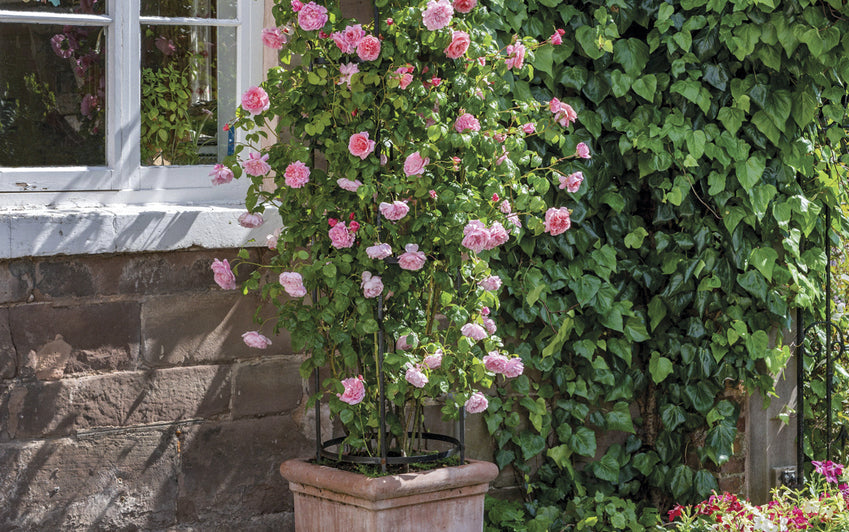 For Climbing Roses:Select a pot at least 2 feet deep and 2 feet wide, 60 x 60 cm, with proper drainage. Dark-coloured pots may absorb more heat, so water more frequently in warm weather. Add crocks or gravel to the base for drainage. Fill with compost and John Innes No. 3 soil, and plant the rose as above, keeping the graft union 2-3 inches, 5-8 cm, below the soil surface. Tie the canes gently to supports and water well.Learn more
For Climbing Roses:Select a pot at least 2 feet deep and 2 feet wide, 60 x 60 cm, with proper drainage. Dark-coloured pots may absorb more heat, so water more frequently in warm weather. Add crocks or gravel to the base for drainage. Fill with compost and John Innes No. 3 soil, and plant the rose as above, keeping the graft union 2-3 inches, 5-8 cm, below the soil surface. Tie the canes gently to supports and water well.Learn more
Aftercare
Water deeply after planting so the soil settles around the roots. Keep the soil evenly moist during the first season, avoiding both dryness and waterlogging. Over time, the rose will anchor itself firmly, sending up green shoots and eventually blooms that reward patience and care. Planting bare root roses is more than a gardening task, it is a quiet beginning, a chance to watch life unfold from simple stems and roots into something truly beautiful.




